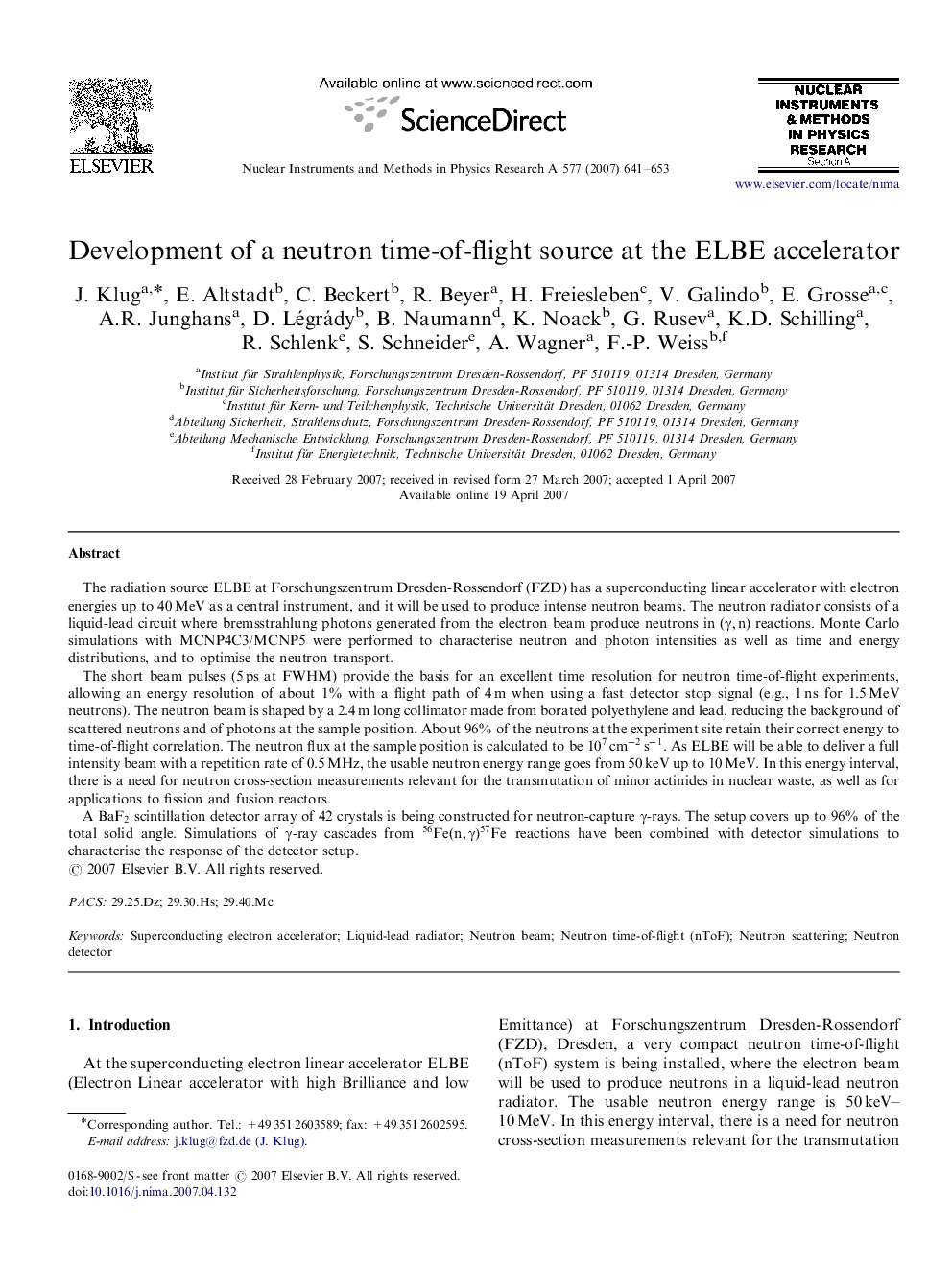| کد مقاله | کد نشریه | سال انتشار | مقاله انگلیسی | نسخه تمام متن |
|---|---|---|---|---|
| 1831502 | 1027497 | 2007 | 13 صفحه PDF | دانلود رایگان |

The radiation source ELBE at Forschungszentrum Dresden-Rossendorf (FZD) has a superconducting linear accelerator with electron energies up to 40 MeV as a central instrument, and it will be used to produce intense neutron beams. The neutron radiator consists of a liquid-lead circuit where bremsstrahlung photons generated from the electron beam produce neutrons in (γ,n)(γ,n) reactions. Monte Carlo simulations with MCNP4C3/MCNP5 were performed to characterise neutron and photon intensities as well as time and energy distributions, and to optimise the neutron transport.The short beam pulses (5 ps at FWHM) provide the basis for an excellent time resolution for neutron time-of-flight experiments, allowing an energy resolution of about 1% with a flight path of 4 m when using a fast detector stop signal (e.g., 1 ns for 1.5 MeV neutrons). The neutron beam is shaped by a 2.4 m long collimator made from borated polyethylene and lead, reducing the background of scattered neutrons and of photons at the sample position. About 96% of the neutrons at the experiment site retain their correct energy to time-of-flight correlation. The neutron flux at the sample position is calculated to be 107cm-2s-1. As ELBE will be able to deliver a full intensity beam with a repetition rate of 0.5 MHz, the usable neutron energy range goes from 50 keV up to 10 MeV. In this energy interval, there is a need for neutron cross-section measurements relevant for the transmutation of minor actinides in nuclear waste, as well as for applications to fission and fusion reactors.A BaF2BaF2 scintillation detector array of 42 crystals is being constructed for neutron-capture γγ-rays. The setup covers up to 96% of the total solid angle. Simulations of γγ-ray cascades from Fe56(n,γ)Fe57 reactions have been combined with detector simulations to characterise the response of the detector setup.
Journal: Nuclear Instruments and Methods in Physics Research Section A: Accelerators, Spectrometers, Detectors and Associated Equipment - Volume 577, Issue 3, 11 July 2007, Pages 641–653